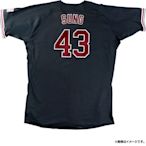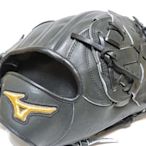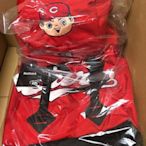搜尋結果
 $330【日職嚴選】日本職棒崎玉西武獅 LIONS 金屬鑰匙圈 現貨供應日職嚴選 日本職棒福田代購
$330【日職嚴選】日本職棒崎玉西武獅 LIONS 金屬鑰匙圈 現貨供應日職嚴選 日本職棒福田代購 $3000日本職棒 楽天金鷹 FANS 2020 球衣 代購強尼日本棒壘球精品
$3000日本職棒 楽天金鷹 FANS 2020 球衣 代購強尼日本棒壘球精品 $24000貳拾肆棒球-Mizuno pro 日本職棒石川雅規特別訂作硬式投手手套展示品貳拾肆世界棒球便利店
$24000貳拾肆棒球-Mizuno pro 日本職棒石川雅規特別訂作硬式投手手套展示品貳拾肆世界棒球便利店 $12502015 Npb 日本職棒 千葉羅德隊 slogan Moeteru 燃 T-shirt 陳冠宇Kiyoshi store
$12502015 Npb 日本職棒 千葉羅德隊 slogan Moeteru 燃 T-shirt 陳冠宇Kiyoshi store![(記得小舖)日本職棒商品 廣島東洋鯉魚 2019 會員限定商品 new era 裝備背包 500個限量 (記得小舖)日本職棒商品 廣島東洋鯉魚 2019 會員限定商品 new era 裝備背包 500個限量]() $7800(記得小舖)日本職棒商品 廣島東洋鯉魚 2019 會員限定商品 new era 裝備背包 500個限量Y7933846138(記得)
$7800(記得小舖)日本職棒商品 廣島東洋鯉魚 2019 會員限定商品 new era 裝備背包 500個限量Y7933846138(記得)![日本職棒 侍JAPAN POLO衫 (兩款) 日本職棒 侍JAPAN POLO衫 (兩款)]() $1900日本職棒 侍JAPAN POLO衫 (兩款)強尼日本棒壘球精品
$1900日本職棒 侍JAPAN POLO衫 (兩款)強尼日本棒壘球精品![日本職棒 楽天金鷹 自動摺疊傘 (有現貨) 日本職棒 楽天金鷹 自動摺疊傘 (有現貨)]() $900日本職棒 楽天金鷹 自動摺疊傘 (有現貨)強尼日本棒壘球精品
$900日本職棒 楽天金鷹 自動摺疊傘 (有現貨)強尼日本棒壘球精品![日本職棒樂天金鷹隊 Majestic電繡球員版球衣(日幣原價8500円) 日本職棒樂天金鷹隊 Majestic電繡球員版球衣(日幣原價8500円)]() $790日本職棒樂天金鷹隊 Majestic電繡球員版球衣(日幣原價8500円)***e-gogo-Japan Shop***
$790日本職棒樂天金鷹隊 Majestic電繡球員版球衣(日幣原價8500円)***e-gogo-Japan Shop***![日本職棒橫濱海灣之星隊DeNA筒香嘉智 主場球衣 日本職棒橫濱海灣之星隊DeNA筒香嘉智 主場球衣]() $690日本職棒橫濱海灣之星隊DeNA筒香嘉智 主場球衣***e-gogo-Japan Shop***
$690日本職棒橫濱海灣之星隊DeNA筒香嘉智 主場球衣***e-gogo-Japan Shop***![2017 東北樂天金鷹隊 則本昂大 連續八場2位數三振日本職棒紀錄紀念球衣限量15件 2017 東北樂天金鷹隊 則本昂大 連續八場2位數三振日本職棒紀錄紀念球衣限量15件]() $900002017 東北樂天金鷹隊 則本昂大 連續八場2位數三振日本職棒紀錄紀念球衣限量15件Kiyoshi store
$900002017 東北樂天金鷹隊 則本昂大 連續八場2位數三振日本職棒紀錄紀念球衣限量15件Kiyoshi store![貳拾肆棒球收藏館-第一屆亞洲職棒大賽konami日本職棒NPBvs韓國KBO實際使用帽 貳拾肆棒球收藏館-第一屆亞洲職棒大賽konami日本職棒NPBvs韓國KBO實際使用帽]() $1599貳拾肆棒球收藏館-第一屆亞洲職棒大賽konami日本職棒NPBvs韓國KBO實際使用帽貳拾肆世界棒球便利店
$1599貳拾肆棒球收藏館-第一屆亞洲職棒大賽konami日本職棒NPBvs韓國KBO實際使用帽貳拾肆世界棒球便利店![((綠野運動廠))創信代理~最新日本職棒-火腿隊FIGHTERS陽岱鋼~球員T恤100%純棉,穿著舒適~促銷優惠~ ((綠野運動廠))創信代理~最新日本職棒-火腿隊FIGHTERS陽岱鋼~球員T恤100%純棉,穿著舒適~促銷優惠~]() $760((綠野運動廠))創信代理~最新日本職棒-火腿隊FIGHTERS陽岱鋼~球員T恤100%純棉,穿著舒適~促銷優惠~綠野運動廠-棒壘專門店
$760((綠野運動廠))創信代理~最新日本職棒-火腿隊FIGHTERS陽岱鋼~球員T恤100%純棉,穿著舒適~促銷優惠~綠野運動廠-棒壘專門店
Hanshin Tigers. Runners-up. Seibu Lions. Finals MVP. Randy Bass ( HAN) NPB seasons. ← 1984. 1986 →. The 1985 Nippon Professional Baseball season was the 36th season of operation for the league.
Japan Series Fighting Spirit Award ( 1961) Joe Donald Stanka (July 23, 1931 – October 15, 2018) was an American professional baseball player. The right-handed pitcher from Hammon, Oklahoma played for the Chicago White Sox of Major League Baseball (1959), and the Nankai Hawks and Taiyo Whales in the Japanese professional leagues (1960–66).
- 3.38
- 1–0
- 3
- History
- Stance in The Japanese Football Pyramid
- Crest
- Clubs
- Promotion and Relegation
- Branding
- Awards
Before the professional league
Before the inception of the J.League, the highest level of club football was the Japan Soccer League (JSL), which consisted of amateur clubs. Despite being well-attended during the boom of the late 1960s and early 1970s (when Japan's national team won the bronze Olympic medal at the 1968 games in Mexico), the JSL went into decline in the 1980s, in general line with the deteriorating situation worldwide. Fans were few, the grounds were not of the highest quality, and the Japan national team wa...
Inaugural season and J.League boom
J.League officially kicked off its first season with ten clubs on 15 May 1993, when Verdy Kawasaki hosted Yokohama Marinos at the Tokyo National Stadium.
After the boom
Despite the success in the first three years, in early 1996 the league attendance declined rapidly, coincided with the economic slump of Japan. In 1997, the average attendance was 10,131, compared to more than 19,000 in 1994. Yokohama Flügels were merged with Yokohama Marinos due to the withdrawal of one of their major sponsors, right after they became the winners of the 1998 Emperor's Cupon 1 January 1999.
Since the inception of the second division in 1999, promotion and relegation follow a pattern similar to the European leagues, where the two bottom clubs of J1 and the top two clubs of J2 are guaranteed to move. From the 2004 to 2008 season, the third-placed J2 club entered the Promotion / relegation Seriesagainst the sixteenth-placed J1 club and t...
Non sponsored logoThis logo was used from 2015 to 2018Japanese version logoMembership requirements
The requirements for joining the J. League include items such as the stadium, management status and team management status. Regarding team management, not only the team itself that actually participates in the J. League game, but also the management obligation of the club youth team by the training organization (subordinate organization) are stipulated. From the 2013 season, the J. League club license system was launched and the system for judging whether or not to join the J.League and the d...
List of member clubs
Club categories and listing order based on club composition for 2024 season. As for the home stadium, the stadium shown on the J. League corporate site as of 2024 is described.Regarding the descriptions in multiple materials, based on the description of the club guide on the J. League official website, the stadium name was based on the naming rights (see the article of each stadium for the handling of naming rights)
Clubs with J3 licenses
Clubs that have not joined the J. League but have been granted a J3 license for the 2023 season (including the J. League 100 year concept club).
Changes in the number of clubs promotion and relegation system
J1 Entry playoffs have been introduced from 2018, 2019 and 2022 respectively. Relegation from J1 to J2 introduced from 1999, J2 to J3 introduced from 2013 and J3 to JFL introduced from 2023. J1 Promotion playoff introduce from 2012 to 2017, reintroduced in 2023 onwards and J2 Promotion playoff to be introduce start from 2024. In 1998, the J1 entry decision match was held. From 1999, a replacement system was introduced with the transition to a two-part system of J1 and J2. Since 2012, a replac...
About the future
The J.League has announced a policy of setting a maximum of 20 teams for the J3 League and 60 teams for the total number of regular member teams including J1 and J2. According to interviews with people involved in the J.League, it has become clear that J1, J2 and J3 are proposing to have 20 teams each from 2024 at the earliest. In conjunction with the increase in the number of teams, this is a new growth strategy that revises the ratio of equal distribution money and in particular, the policy...
The first official J.League Anthem - "J'S THEME" debuted in 1993 and was composed by Michiya Haruhata. It was used during league broadcasts and as a prelude to kickoff at stadiums. J.League and J.League clubs make the most out of their logos / emblems and mascots for branding and marketing.
Japan is an island country in East Asia.It is in the northwest Pacific Ocean and is bordered on the west by the Sea of Japan, extending from the Sea of Okhotsk in the north toward the East China Sea, Philippine Sea, and Taiwan in the south. Japan is a part of the Ring of Fire, and spans an archipelago of 14,125 islands, with the five main islands being Hokkaido, Honshu (the "mainland ...
Major League Baseball (MLB) is a professional baseball league and the highest level of organized baseball in the United States and Canada. One of the big four major leagues, MLB comprises 30 teams, divided equally between the National League (NL) and the American League (AL), with 29 in the United States and 1 in Canada. Formed in 1876 and ...
- 30
- Baseball
- New York Yankees, (27 titles)
129,000–226,000. On 6 and 9 August 1945, the United States detonated two atomic bombs over the Japanese cities of Hiroshima and Nagasaki. The bombings killed between 129,000 and 226,000 people, most of whom were civilians, and remain the only use of nuclear weapons in an armed conflict. Japan surrendered to the Allies on 15 August, six days ...
Unit 731 ( Japanese: 731部隊, Hepburn: Nana-san-ichi Butai), [note 1] short for Manchu Detachment 731 and also known as the Kamo Detachment [3] : 198 and the Ishii Unit, [5] was a covert biological and chemical warfare research and development unit of the Imperial Japanese Army that engaged in lethal human experimentation and biological ...








